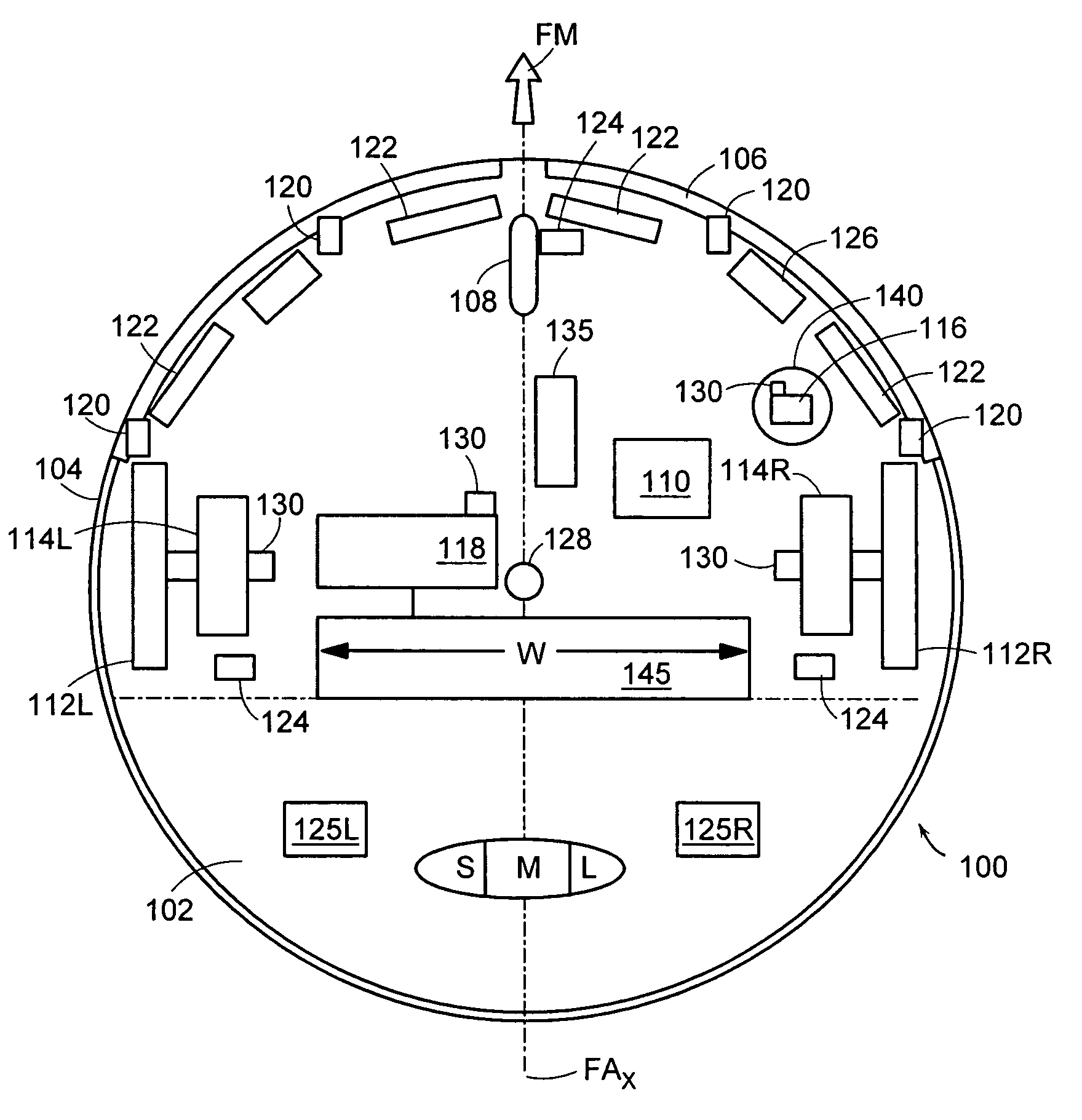Debris sensor for cleaning apparatus
a technology of debris sensor and cleaning apparatus, which is applied in the direction of carpet cleaners, distance measurement, instruments, etc., can solve the problems of degrading the performance of optical sensors, and achieve the effect of cleaning the debris field most effectively
- Summary
- Abstract
- Description
- Claims
- Application Information
AI Technical Summary
Benefits of technology
Problems solved by technology
Method used
Image
Examples
Embodiment Construction
[0036]While the debris sensor of the present invention can be incorporated into a wide range of autonomous cleaning devices (and indeed, into non-autonomous cleaning devices as shown by way of example in FIG. 7), it will first be described in the context of an exemplary autonomous cleaning device shown in FIGS. 1–3. Further details of the structure, function and behavioral modes of such an autonomous cleaning device are set forth in the patent applications cited above in the Cross-Reference section, each of which is incorporated herein by reference. Accordingly, the following detailed description is organized into the following sections:[0037]I. Exemplary Autonomous Cleaning Device[0038]II. Behavioral Modes of an Autonomous Cleaning Device[0039]III. Debris Sensor Structure[0040]IV. Signal Processing[0041]V. Conclusions
[0042]I. Autonomous Cleaning Device
[0043]Referring now to the drawings wherein like reference numerals identify corresponding or similar elements throughout the severa...
PUM
 Login to View More
Login to View More Abstract
Description
Claims
Application Information
 Login to View More
Login to View More - R&D
- Intellectual Property
- Life Sciences
- Materials
- Tech Scout
- Unparalleled Data Quality
- Higher Quality Content
- 60% Fewer Hallucinations
Browse by: Latest US Patents, China's latest patents, Technical Efficacy Thesaurus, Application Domain, Technology Topic, Popular Technical Reports.
© 2025 PatSnap. All rights reserved.Legal|Privacy policy|Modern Slavery Act Transparency Statement|Sitemap|About US| Contact US: help@patsnap.com



